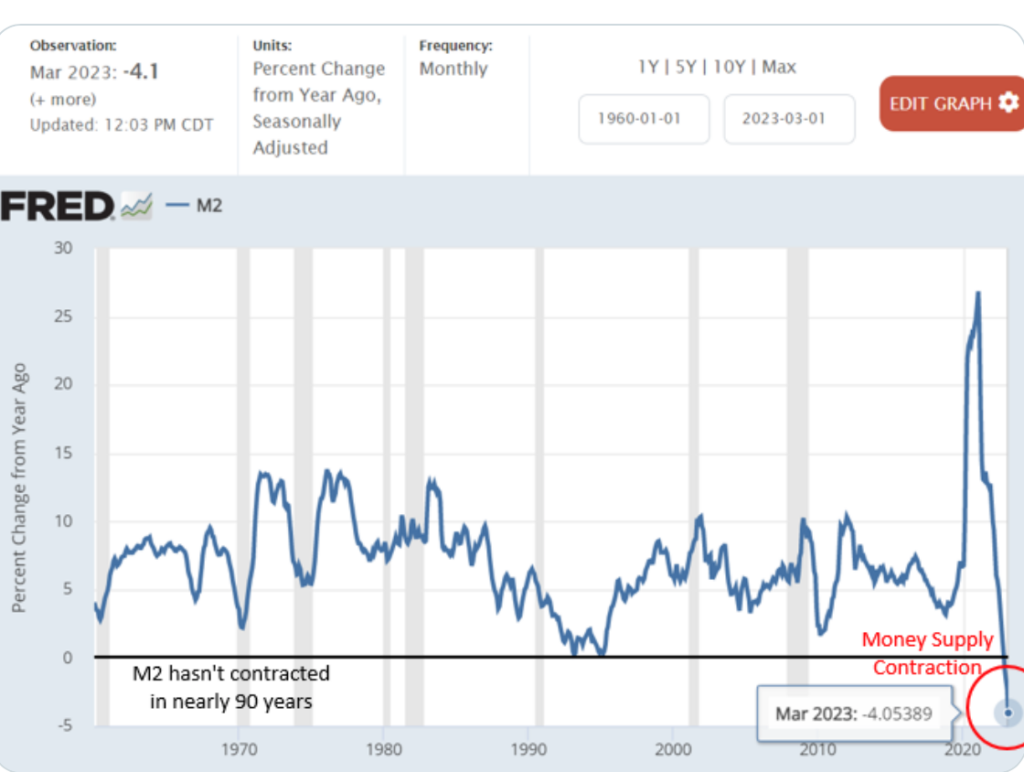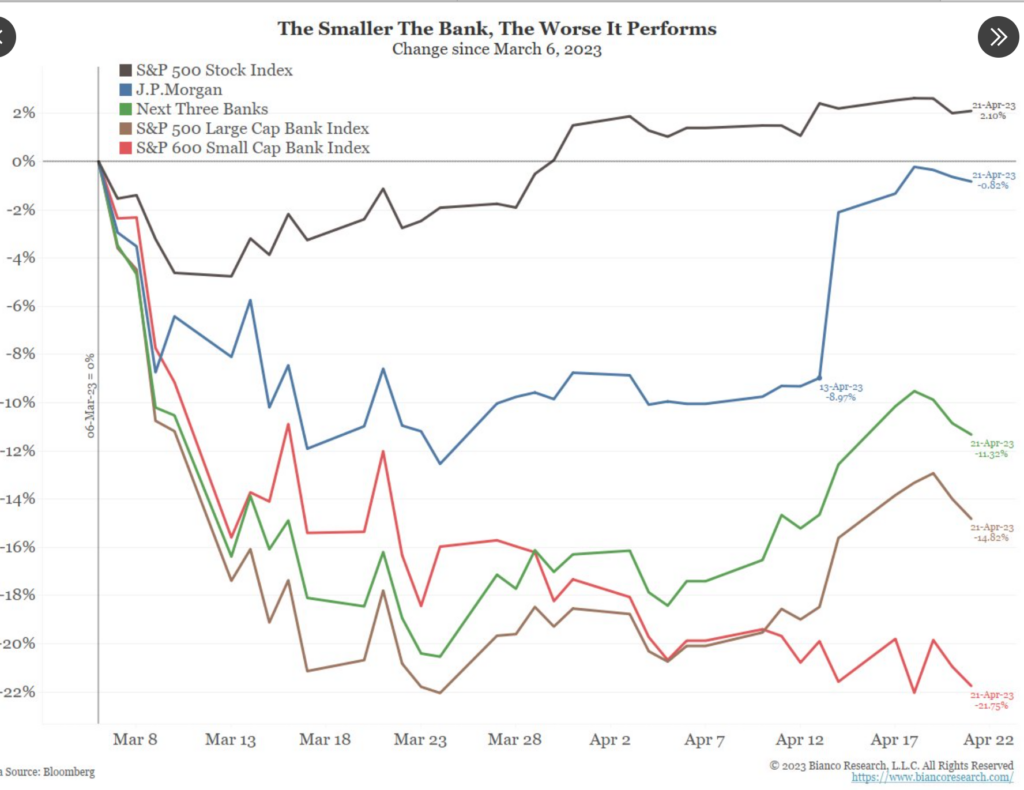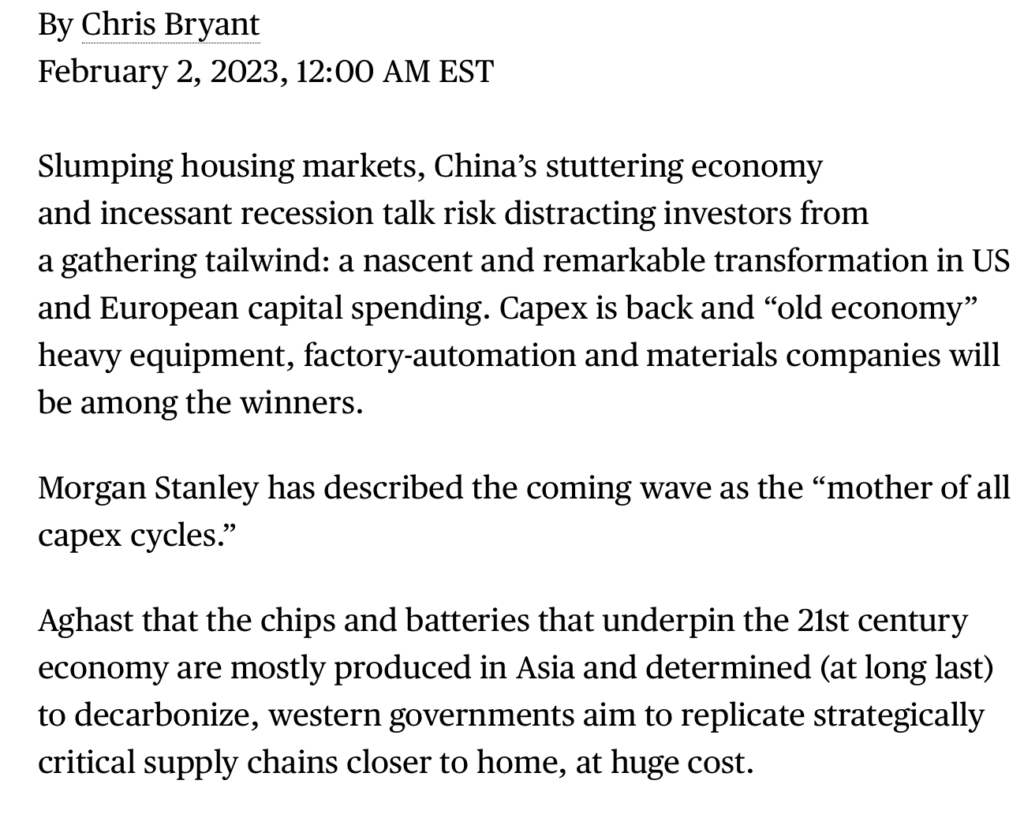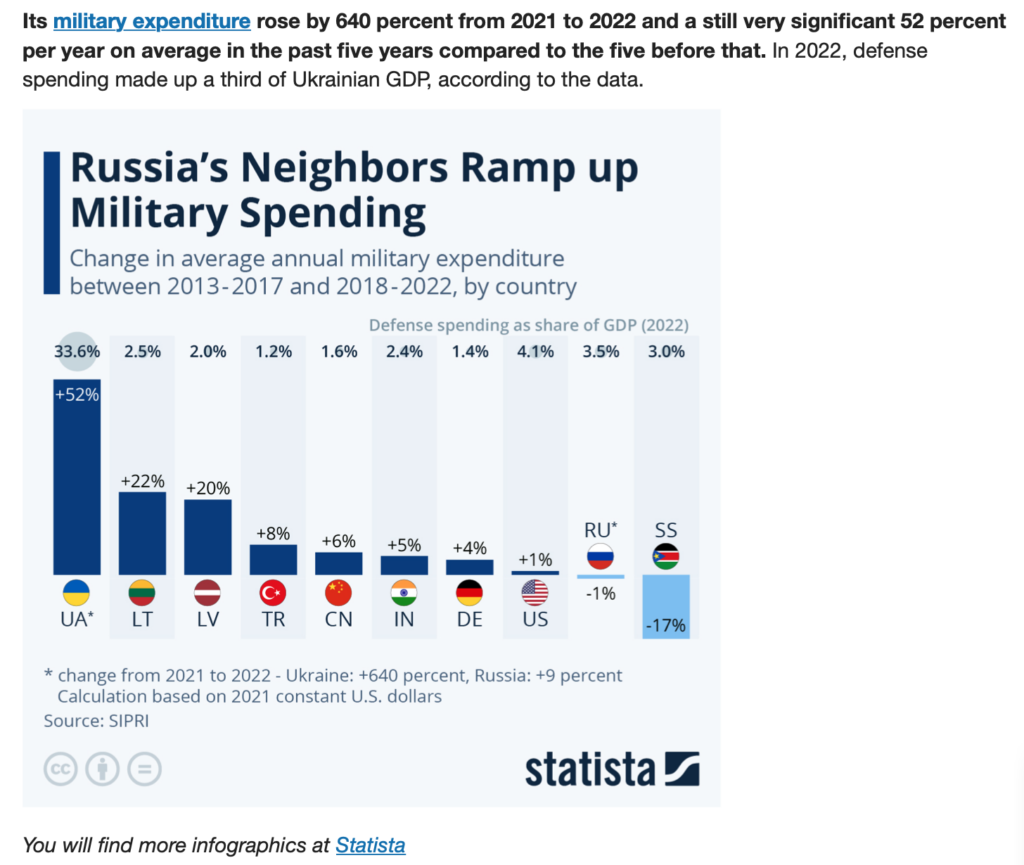1. Money Supply Biggest Contraction in 90 Years.
Above my pay grade on how skewed this is due to Covid vs. historical.

Nick Gerli @nickgerli1 https://twitter.com/nickgerli1
2. Bank Performance Large to Small
Jim Bianco Research

3. History of Muni Bonds After Fed Rate Hikes

4. EV Sales +55% Last Year
KEY POINTS—CNBC Anmar Frangoul
· The record sales figures, contained within the International Energy Agency’s Global EV Outlook for 2023, continue a trend of sustained growth for the industry.
· “Electric car sales — including battery electric vehicles (BEVs) and plug-in hybrid electric vehicles (PHEVs) — exceeded 10 million last year, up 55% relative to 2021,” the IEA’s report says.
· The Paris-based organization says more than 26 million electric cars were on the world’s roads in 2022, which represents a 60% increase relative to 2021
Electric car sales jumped to more than 10 million last year, with China accounting for roughly 60% of the market, according to a report from the International Energy Agency published Wednesday.
The record sales figures, contained within the IEA’s Global EV Outlook for 2023, continue a trend of sustained growth for the industry.
“Electric car sales — including battery electric vehicles (BEVs) and plug-in hybrid electric vehicles (PHEVs) — exceeded 10 million last year, up 55% relative to 2021,” the IEA’s report said.
“This figure — 10 million EV sales worldwide — exceeds the total number of cars sold across the entire European Union (about 9.5 million vehicles) and is nearly half of the total number of cars sold in China in 2022,” it added.
The IEA defined “sales” within its report as being “an estimate of the number of new vehicles hitting the roads.”
In total, it said more than 26 million electric cars were on the world’s roads in 2022, which represents a 60% increase relative to 2021.
Plug-in hybrid electric vehicles, or PHEVs, have an internal combustion engine as well as a battery-powered electric motor.
Some regard them as an important tool in the transition toward low- and zero-emission forms of transport. Others, including organizations such as Greenpeace UK, take a dim view of them.
Looking ahead, the Paris-based IEA — seen by many as an authoritative voice on the energy transition — said it was estimating worldwide sales to reach almost 14 million in 2023.
“This explosive growth means electric cars’ share of the overall car market has risen from around 4% in 2020 to 14% in 2022 and is set to increase further to 18% this year, based on the latest IEA projections,” a statement accompanying the report noted.
Chinese market dominant
The IEA described China as being “the frontrunner” when it came to electric car sales. It added that over 50% of electric cars on the road could now be found in the world’s second-largest economy.
“In Europe, the second largest market, electric car sales increased by over 15% in 2022, meaning that more than one in every five cars sold was electric,” the IEA said, adding that U.S. electric car sales had risen by 55% in 2022.

5. $330B in Mega Cap Projects Coming to U.S.
Bloomberg


6. Semiconductors 56% of U.S. Mega Projects
Bloomberg Semiconductors account for 56% of the $330 billion of North American megaprojects announced since 2020, according to Melius Research, which counts $86 billion of US electric-vehicle and battery-plant announcements in the same period.
SMH ETF big rally but below 2021 Highs

7. However this is All Happening Under a New Massive Reset on the Cost of Money.
Axios Neil Irwin

https://www.axios.com/2023/04/21/global-economy-slow-reset
8. Russia’s Neighbors Ramp Up Military Spending
BY TYLER DURDEN-ZERO HEDGE
Russia’s neighbors in Europe have upped their military spending since the invasion of Ukraine in early 2022.
But, as Statista’s Katharina Buchholz notes, even before the war – over the course of the past decade – expenditure on defense had already increased substantially in these nations.
Perhaps most unsurprisingly, Ukraine itself shows one of the biggest increases measured by the Stockholm International Peace Research Institute.

https://www.zerohedge.com/geopolitical/russias-neighbors-ramp-military-spending
9. World’s Largest Arms Exporters

https://en.wikipedia.org/wiki/Arms_industry
10. The Myth of Being Busy Nir Bashan
Psychology Today Busy doing something but accomplishing nothing? These 3 tools will help.
KEY POINTS
- While being “busy” may seem important, simply being busy to be busy accomplishes nothing.
- There are a number of creative ways to help avoid busywork.
- It is not only possible to avoid busywork, but rewarding and meaningful as well.
I have worked my entire adult life. I have even worked a portion of my childhood—going door to door washing cars for five dollars a pop in a Los Angeles suburb where I grew up. And in all that time, I have witnessed a phenomenon that took me well into adulthood to understand. That phenomenon is the amazing ability that we humans have to be busy simply to be busy—accomplishing nothing more than meaningless tasks[1]. Literally producing nothing but the perception and appearance of being busy.
It gets worse. On top of that, people who appear to be busy are often esteemed or viewed as being important at work, even if there is no meaningful productivity from all this busyness. It’s quite amazing from a productivity standpoint how many hours are wasted on endless meetings that go nowhere and on paperwork that amounts to nothing—in fact, new research shows that 70 percent of meetings keep employees from doing productive work[2]. So here are three tools I have identified from a creativity and innovation standpoint that can help you keep on track—getting real and meaningful things done—rather than just being busy for busyness’ sake:
1. Ask Questions.
When we ask questions instead of just doing, we uncover some profound reasons why we are doing what we are doing[3]. Far too often, we are driven by the task at hand, and completing the task is our only goal. But we need to broaden that if we are to invite creativity and innovation into our process.
So, instead, ask questions. Questions like “Why are we doing this?” and “Who gets the most benefit?” are a really good start no matter what you are working on. Questions like “Do we benefit internally as much as our customers or clients do externally?” may be even better. When we ask questions—any questions, really—we give our work meaning in a far greater scope than just executing a task.
Asking questions can also lead to creative discoveries. The way that we ask questions and the types of things we are curious about may be completely different from one person to another. So asking questions—especially from multiple team members—uncovers vastly different perspectives on the same problem. In other words, asking questions can reveal a path toward a solution that would never materialize if we hadn’t asked the questions in the first place.
2. Look at History.
If there are certain tasks executed by your company or in your career over and over again with little results—it may be time to look at history. Often, we are so busy in our careers that we are focused on accomplishing the tasks ahead of us, irrespective of where those tasks are leading. It’s almost as if we have our blinders on—not knowing how each part of our tasks go together to make up the whole of what we are doing.
So, for instance, if you are constantly reinventing the wheel at work—say for proposals that need to go out to market—if we look at the history of what is going on and why that is, we can uncover some incredibly creative and innovative tools that can help remedy the situation. We may find in this case that our process for proposals is lacking—or that we don’t fully have a grip on our pricing model, and that is why our proposal process is a mess. Like the domino effect, most issues in business are interrelated. And we may uncover that someone who used to quarterback our proposals has been shifted to another department, and that is where the gap lies. Again—it is all about looking at the history of a particular task and then analyzing how we got to where we are today—and using history to solve problems.
Too often, people are afraid of history because it is seen as something that is “slowing us down,” or “wasting energy,” or something that is “impeding progress in some way.” But I argue that a tree without its roots is no tree at all. If we don’t know what happened yesterday, we can never be prepared to handle what will come tomorrow. So instead of constantly looking forward, it’s good to take a peek back every once and a while to make sure that you are not just busy for busyness’ sake—but you are indeed working to solve issues that matter.
3. Take a Macro View.
There are too many times at work when we subjugate tasks to particular teams without an explanation of the full impact each part has on the whole. This leads to a number of issues, not the least of which is being busy for busyness’ sake. The other main issue that happens is burnout and fatigue, as folks who don’t have a good idea of where the company is going and what their role is in that journey become frustrated and disconnected. A skeptic may say that staff becomes empowered to execute tasks—fair enough—but these tasks are meaningless without a broad-scope macro view as to why the tasks are important in the first place.
So instead, take a macro view. A macro view is a long-term vision or plan that allows for multiple little victories to be achieved along the way. These little victories can be tasks, or they can be something else—but keeping track of these victories and stopping every once and a while to recognize accomplishments is very important. It creates less wasted energy and work for work’s sake—and gives meaning to each person completing the seemingly meaningless tasks. It gives meaning to these tasks and builds a sense of camaraderie that—yes—the tasks can be done, and they lead to a bigger macro picture. And that is something that everyone can contribute to and feel proud to accomplish. Nobody uses the appearance of being busy if they know how important their role is in the entire apparatus.
The myth of being busy for busyness’ sake is a damaging enterprise across all levels. Who hasn’t worked somewhere where being chained to your computer and “doing something” all day was seen as a job well done—regardless of whether the “doing something” was of any value? But there is hope. Just doing things and endlessly grinding over tasks that may or may not be important is not only a waste of time, but it is also demoralizing and leads to burnout and disengagement[1]. The three tools above can help you institute a new process that will lead to meaningful work instead of busy work—and there is plenty here to boost creativity and drive innovation and meaning for your business and career moving forward.
https://www.psychologytoday.com/us/blog/the-psychology-of-creativity/202304/the-myth-of-being-busy